On March 25, the Hong Kong government imposed travel restrictions to all inbound travelers to Hong Kong. Those traveling in from overseas will need to undergo 2 COVID-19 saliva tests and a compulsory 14-day quarantine at home or other accommodations (like a hotel). Violators of the quarantine are faced with HKD $25,000 in fines and up to 6 months in jail.
I was one of those overseas travelers (flew in from San Francisco) who had to go through the quarantine process in Hong Kong, and I wanted to share what it was like to go through the COVID-19 protocols at Hong Kong International Airport.
Traveling to Hong Kong With COVID-19 Quarantine Restrictions – What to Expect
Starting from the moment I left the aircraft, I was greeted by teams of helpful airport staff members who helped shepherd us to the designated locations at the airport at every point imaginable. Honestly, we were roped off and there was only one way to go, so we would have ended up in the right place anyway…
Because of COVID-19, we now have to go through a long process of paperwork processing and quarantine protocols at different stations before even going through customs. After passing by a booth that does temperature checks for all, the first stop was a place to fill out paperwork. To get into Hong Kong, we had to fill out two forms. The smaller of the two forms is a health declaration form that the airline passed out during our flight. The larger of the two forms is a quarantine order form, and you have to fill it in twice – one for us to keep and the other for the officials to keep. This is a legally binding document that lists out the terms and penalties of the quarantine order, and it is signed by the traveler and an officer at the airport.
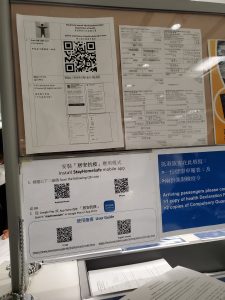
Hong Kong Airport Quarantine Protocols – Instructions to fill out the quarantine order form and download the Stay Home Safe App
Once the paperwork is filled out, we will also need to download the “Stay Home Safe” app to track our location and enforce the quarantine order during the 14-day period. Staff members were there to ensure the app was properly downloaded before we were allowed to continue with the process.
After the app was properly downloaded, we were then directed to a series of stations, each dedicated to a certain step in the process. I don’t remember how many or what all the stations were, but I recall there were a lot of stations, all specialized in a specific task. There were stations that were dedicated to checking my forms for completion and for legibility, validating that the information on my form was correct – one staff member actually called my phone and watched it ring before I was able to proceed, validating my quarantine address, checking ID, physically putting the tracking bracelet on me, another station for helping me connect my bracelet to the Stay Home Safe app (you scan the QR code), and then the final station was a checkpoint with an authorized officer to be briefed on the quarantine order (with a specified end date and time) and to sign the legally binding compulsory quarantine order. At this final checkpoint, I was given an envelope with a booklet of information on the process, a piece of paper to document the transportation I would take to my place of quarantine (for contact tracing), instructions on how to use/activate the app when I get home, and a lanyard that will be used in the testing process. The whole process was very organized, efficient, and well-thought out.
After the final checkpoint, I was finally able to go through customs and get my bags, the way I have always done in the past. That was the quickest and the most normal part in the entire arrivals journey.
After getting my bags, I was then directed to a roped area that led me to the shuttle buses. I loaded my bags to the bus (actually there people there helping us with our bags, so I just had to leave them curbside) and was transported to the Asia-World Expo, which was converted into a temporary COVID-19 test center to collect “deep throat saliva samples.” Those who arrive in the day time will wait for their results at a designated location at the Expo, and those who arrive in the evening will be assigned a hotel room to wait for their test results the next day.
COVID-19 Testing
Upon arrival at the Asia-World Expo, my bags were unloaded by friendly staff members in doctor’s gowns, masks and caps (pretty surreal), and I entered the Asia-World Expo for more processing. The first stop was a place to check in our bags so we didn’t have to take them with us. Looking back, I was super grateful for this – it would have been such a hassle! They were extra careful when checking in our bags – all bags were tagged and they sprayed down every bag with disinfectant. After checking in my bags, I was then directed to get onto another shuttle to take me to another area of the Expo for specimen collection.
At the specimen collection area, I checked in with some folks who checked my ID once again, processed my paperwork, and gave me a specimen collection packet as well as a booth number for collecting my saliva sample. The packet included a specimen collection tube, tissues, a triangular shaped paper cup (those from the water coolers) used as a funnel, and alcohol wipes.
After checking in, I was directed to an area to sit and watch instructions on how to collect my saliva sample. There were a number of screens that played a looped video of step by step instructions. The area was set up with chairs that were spaced apart from on another. Once I watched the video, I proceeded to another area where walled booths were set up (for privacy?), each with tables, step by steps instructions, and trash cans for you to dispose used cups and tissues. Each booth was labeled with a number, and I went to the booth that matched the number given to me at check-in.
The collection of the saliva sample was self administered. The instructions ask that you lay down tissue paper – 1 for putting your mask onto and the other one for wiping down the specimen tube. You are asked to sanitize your hands, remove your mask, and then to use the triangular paper cup as a funnel to direct your deep throat saliva into the tube. After collecting the sample you are asked to keep the tube upright, wrap it up in the first biohazard bag and then drop that wrapped tube into another biohazard bag (with your identifications on it) for submission. When done with collection, there was an area where you would drop off the sample with staff members, and then you are directed to the bathroom (conveniently located next to the station) to wash your hands.
After collection of the sample, I was directed to another area of the expo to wait for my hotel assignment. Somewhere along this process (I can’t remember when) I was given a tag with a number to attach to my lanyard, and this number was used in identifying me for the hotel assignment. I also received another packet for collecting another saliva sample on the 12th day of my quarantine.
Hotel Arrangements for Late Arrivals
My flight arrived at 9PM, so I was directed to an area to wait for a hotel room assignment. This was a very large space. Like the test area, this area had a number of chairs spaced apart so we can practice social distancing while waiting. Upon arrival I was given a clipboard with a form to fill out and was offered snacks and water for the wait. After submitting the form, it took around 30-45 minutes for them to call my number and assign a room to me. Wifi was available throughout this center, so it was a decent experience. When my number was called, I went to yet another station of staff members where they checked my ID/paperwork again and wrote my room number on my lanyard tag. When I received my room assignment, I was directed to the baggage area to claim my bags and then went to board the shuttle taking us to the hotel.
Hong Kong’s Quarantine Center – Regal Oriental Hotel (Kowloon City)
The government converted the Regal Oriental Hotel into a quarantine center for inbound travelers from overseas. When we arrived at the hotel, we were greeted by staff members dressed in doctor’s gowns and face shields outside the hotel. The staff was very friendly – they helped us unload our bags and directed us inside. Inside the “lobby”, there were many more suited up staff members checking us in – in just a few minutes we were given our room keys and a hot meal to take with us to our rooms. There was a line getting upstairs because we were only allowed in the elevator one at a time, and staff members controlled the elevators for us (cannot figure out if this was a quarantine protocol or just a customer service thing).
They have thought through everything – the keycard only works once, so once we entered our rooms, we were not allowed back out again until we receive a call about our test results.
The Regal Oriental Hotel was older and a little run down, but overall the rooms were comfortable and quite large for Hong Kong standards. Above all, it was a free accommodation provided by the government so I was quite impressed. Instead of calling this a hotel, the HK government calls this “the Centre,” and it was run like a government-owned property. Hotel services were not available (although ala carte food was available), and the rooms were stripped down to the bare essentials – 1 roll of cheap toilet paper, disposable toothbrush, shower cap, shower gel, and shampoo. In my room, there was no soap, which I found odd since this was a place used for quarantine, so I think this was an oversight for my room. The TV remote control was wrapped in plastic (to make it easier to sanitize), and extra room lamps were wrapped in plastic bags. A bottle of water was assigned to each traveler (although my room had two bottles), and there was a water kettle so you can boil your own water if you need more. Wifi is available, but it is limited to 2 devices per room, and the connection was terrible, probably because so many people were bored and on the network.
In the morning between 8am and 9am, the staff delivered a continental breakfast on a stool outside our doors. Test results were available from 9AM to 3PM, so it was a waiting game until the call comes. Throughout the morning/afternoon, you can hear people leaving their rooms. My call did not come until close to the end of that time frame, and lunch wasn’t provided. 🙁
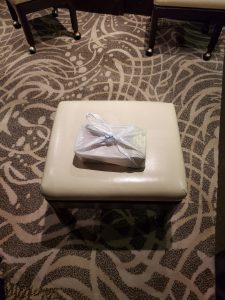
Contact-less breakfast delivery
A staff member called my room and told me the test results came back negative so I could check out. I went downstairs with my bags and was greeted again with teams of hospital gown staff members who helped me with my bags and shepherded me to several stations for check out. These check out stations included one that collected my room key and lanyard and checked my ID and paperwork, another that reminded me of my quarantine order and penalties associated with it, and another for a doctor/official to sign my paperwork for transferring to another quarantine location. After going through this quick and super efficient check out process, I was free to go outside where there were taxis waiting for us if we needed a ride. From there you are supposed to go home or another designated location (like a hotel) to self quarantine for the next 13 days (the day you arrive is Day 1). There is a form to fill out for the mode of transportation (name of driver, vehicle license, etc.) to my quarantine location in case there is a need for contact tracing later on.
Compulsory Home Quarantine
After arriving at my final quarantine location, I activated my Stay Home Safe App (it’s a big red button labeled “I am Now Home”). The app then instructed me to place my bracelet next to my phone and walk all around my home for 1 minute. Supposedly it is able to detect all the signals in my home so it will know if I am home. After doing that, I was set up for the quarantine. During this period I am not supposed to step outside my hotel room or else I break quarantine.
During the quarantine, I am asked to check and record my temperature twice a day and to keep track of any symptoms I may have. On the 12th day of my quarantine, I will have to take another saliva sample (same process) and submit that to a clinic/lab in select locations around Hong Kong. For those who do not have friends or relatives to help submit their samples, the packet includes information on courier services that will help with this task, for HKD $100.
Hotel Protocols
For my quarantine, I chose to stay in a hotel. The hotels that allow quarantine stays have special arrangements for quarantine guests (select rooms on certain floors or specified areas of the hotel with special protocols), I had to call to make a reservation. Many hotels do not accommodate quarantine stays, so it is best to call first before booking.
At my hotel, I was housed in a room on the same floor with other quarantine guests. I was given ample supply of bath products (and can ask for more if I need), and housekeeping will not be coming to my room. For food delivery, the staff will leave the food in a basket outside my door and ring the doorbell. I will collect the food from my door and leave the food outside. If there is food delivery from outside that requires cash payment, I will leave cash outside my door first and then they will pay the delivery folks with that cash. Nowadays there are so many delivery apps with credit card options that this process is not really necessary.
Tips for Travel to Hong Kong During the Compulsory Quarantine Order
- Make sure you have a phone number that will work in Hong Kong. There is a station at the airport that checks if your phone number is working. You will not have a chance to go to the store to buy a phone card (stores closed and also not accessible when you arrive).
- If you are staying in a hotel, make sure you have your reservation printed out or ready on your phone. The officers at the airport checked to make sure I had a place to stay. I am not sure what the process would be if you are going home for the quarantine period. I was also advised to have a reservation for the night of my arrival, even though I was probably going to the government quarantine center. Why? Sometimes the government hotel might be full, and you will need your own place to quarantine that night.
- Bring a thermometer. You will need to check your temperature twice a day, and they do not provide you with one. Inside the information booklet, they did say there is a department that can help you find a thermometer, but I am not sure how much trouble that is.
- Bring soap. The hotel room I was assigned to did not come with soap (it’s kind of ironic). Perhaps it was an oversight for my room specifically, but it doesn’t hurt to be prepared.
- Be patient. The process took 4 hours for me, from the time I landed at HKG to my arrival at the hotel. This included a lot of time shuttling around and waiting for a hotel assignment. For those who arrive in the day time, I believe you will have to wait there for the test results that same day.
- If you are staying in a hotel, find a hotel with good service. You will be relying on them for many things during the quarantine period, so it’s worth paying a bit more to be more comfortable.

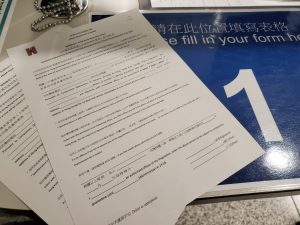
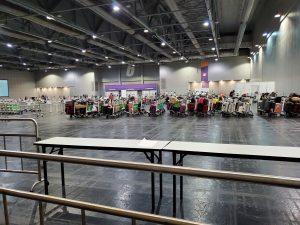
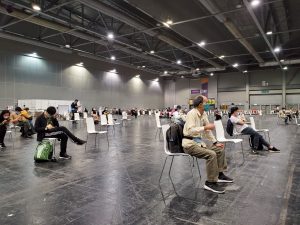
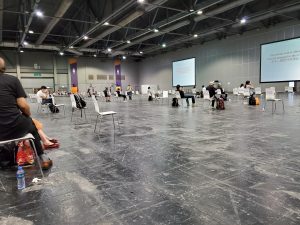
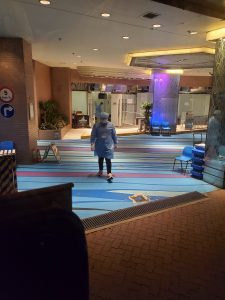
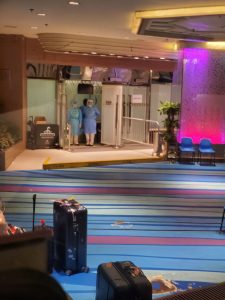
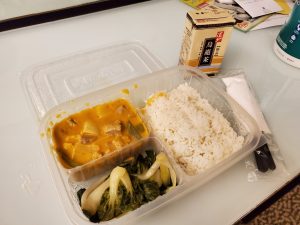
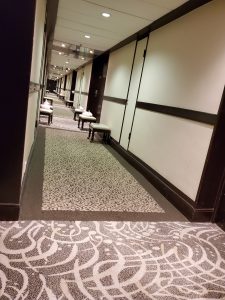
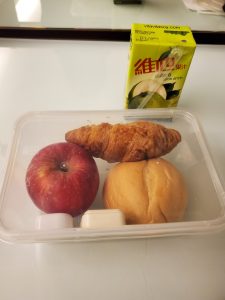
Hi there, thank you for the post it is very helpful. Are you able to confirm which you stay for quarantine? Thanks
Hi – thank you for reading this post. I stayed at the Park Lane Hotel in Causeway Bay